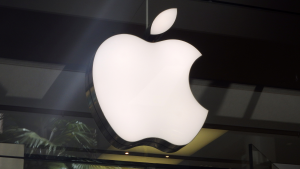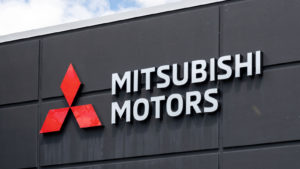
The current Berkshire Hathaway (NYSE:BRK-A, NYSE:BRK-B) equity portfolio is worth $326.2 billion as of Oct. 27. The portfolio has 55 Warren Buffett stocks, including two S&P 500 ETFs.
The top 10 holdings account for 87% of its total, with Apple (NASDAQ:AAPL) its largest holding at 47.2%. Like every other stock over the past couple of months, Berkshire has gotten knocked lower. As a result, the stock is up just 7% year-to-date, 64 basis points lower than the index.
Over the past 10 years, Berkshire’s stock has outperformed the index on seven occasions. Further, Berkshire, which doesn’t pay dividends, generated an average annual return of 14.2% over the past decade, 50 basis points higher than the index, whose return figures I got from the 2022 Berkshire shareholder letter, which includes dividends, so the beat is even more impressive.
I don’t think there’s any question the best of the Warren Buffett stocks is Berkshire itself.
However, if you don’t want to own the world’s greatest investment fund that charges zero fees, here are three Warren Buffett stocks to buy now.
Apple (AAPL)

While there are other stocks in the Berkshire portfolio, there is no question that Apple represents the new guard, accounting for almost half the holding company’s $326 billion in equity securities.
As WhaleWisdom.com points out, Buffett first started Acquiring Apple shares in Q1 2016. Berkshire’s estimated average price paid is $39.62, so even with the fall off since July, Apple’s share price is still up more than 34% year-to-date.
In a nod to Halloween and the launch of its M3 next-generation silicon chip, Apple will hold the online-only “scary fast” event on Oct. 30. As part of the event, Apple will also release a revamped version of the iMac, the first update since it launched an iMac with Apple’s own M1 chip in 2021. This chip is thought to be considerably faster.
As someone who uses a number of Apple products (iPhone, iPad, Air Pods), it would be nice if the M3 iMac were worth breaking open the piggy bank for. I guess we’ll see.
In the meantime, Apple releases its earnings on Nov. 2. Investors will be watching very closely. Analysts are calling for earnings per share of $1.39 in Q4 2023 from revenue of $89.31 billion. Both numbers are up from last quarter.
Whatever happens, Buffett’s not going to be selling.
American Express (AXP)

American Express (NYSE:AXP) represents the old guard of Berkshire stocks. The company’s owned Amex stock in one form or another since 1991. It is Berkshire’s fourth-largest holding, accounting for 6.6% of its equity portfolio. The position represents a 20.8% ownership stake in the financial services company, making it by far Amex’s largest shareholder.
In August 1991, Buffett invested $300 million in preferred stock from the company. Berkshire’s preferred investment came with a fixed 8.5% dividend. At the time, American Express’s Shearson Lehman Bros. brokerage subsidiary was struggling, and its credit card business faced increased competition.
As Buffett has done many times since, he’s put his stamp of approval on struggling businesses with iconic brands — for a price, of course.
“Getting Buffett to come in with a relatively small investment is an attempt by Robinson to rebuild confidence,” said E. Wilson Davis, an analyst at Gerard Klauer Mattison. “It says: ‘This shrewd, intelligent, nuts-and-bolts investor has confidence in American Express,’ “the Los Angeles Times reported in 1991.
By the end of 1998, Berkshire owned 50.54 million shares of its stock at a cost of $1.47 billion, or $29.09 a share. At the time, it was the company’s largest holding by cost. Through splits, the share count has grown to 151.61 million.
While the shares haven’t performed over the past five years — up 36.3% compared to 51.2% for the S&P 500 — it gets $302 million in dividends from Amex, which it reinvests in its various businesses.
It’s long since paid for itself.
Mitsubishi (MSBHF)

Mitsubishi (OTCMKTS:MSBHF) is the largest holding of the five Japanese trading houses that Berkshire has invested in, accounting for 1.7% of the company’s equity holdings.
In June, Berkshire confirmed it had added to its positions in each of the five companies. It now owns 8.3% of Mitsubishi Corp.
Nikkei Asia recently discussed how these trading companies — known as sogo shosha — have evolved into holding companies much like Berkshire Hathaway.
“Since the 1990s, the sogo shosha have shifted from a focus on trading to directly owning and running businesses as equity holders of companies and projects, which indeed has made them more comparable to U.S.-based Berkshire Hathaway,” Nikkei Asia contributor Mitsuru Claire Chino wrote on Oct. 2.
“Today the groups have a huge global presence as strategic investors in projects and entities in a range of industries, including energy, minerals, chemicals and food. Each one is like a combined logistics provider, financier, investment firm and consulting company.”
Chino writes that Mitsubishi has partnered with Tokyo Gas (OTCMKTS:TKGSY), Osaka Gas (OTCMKTS:OSGSY), Toho Gas (OTCMKTS:THOGF) and Sempra (NYSE:SRE) to develop an e-methane plant in the Gulf Coast. It will liquify the methane and export it to Japan.
Buffett’s investment is another example of him applying the Berkshire stamp of approval on a company or sector.
On the date of publication, Will Ashworth did not hold (either directly or indirectly) any positions in the securities mentioned in this article. The opinions expressed in this article are those of the writer, subject to the InvestorPlace.com Publishing Guidelines.




